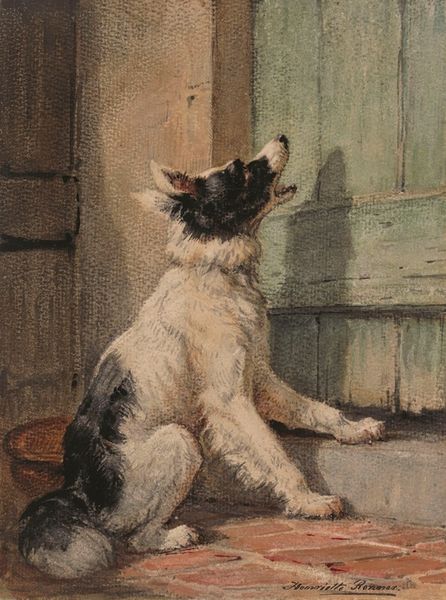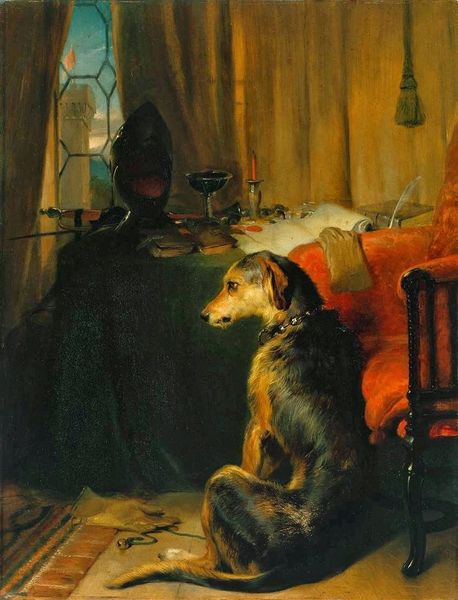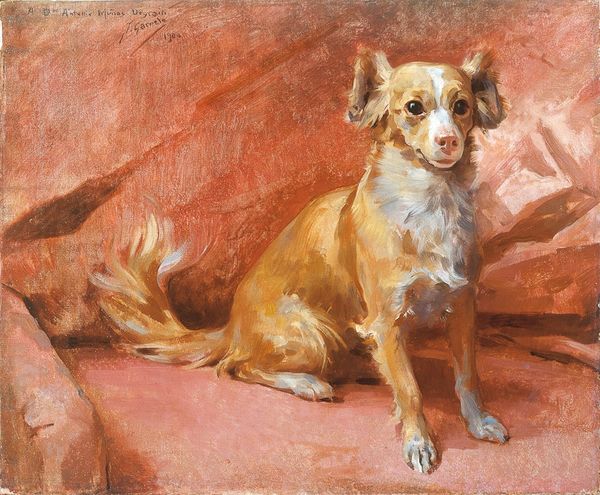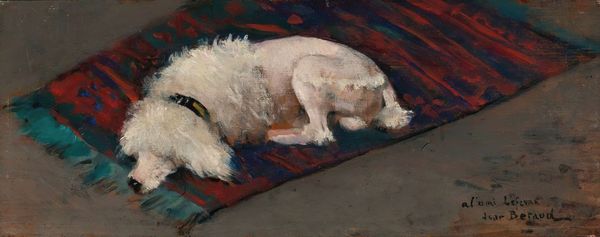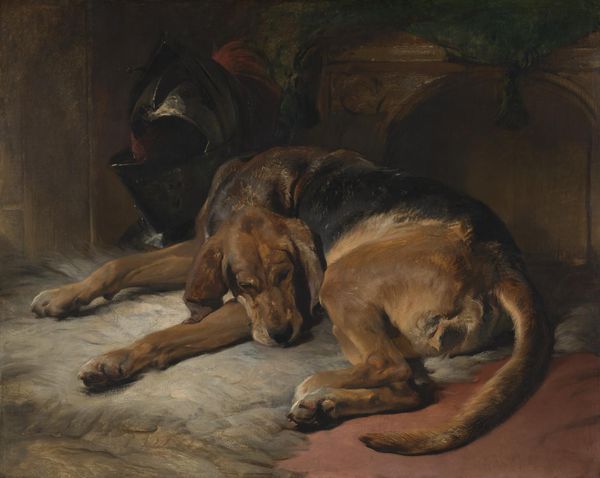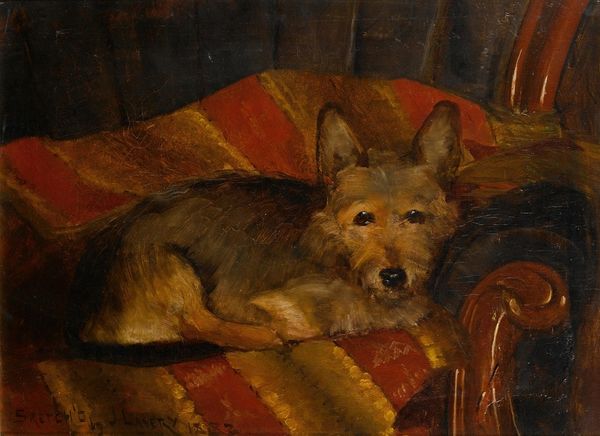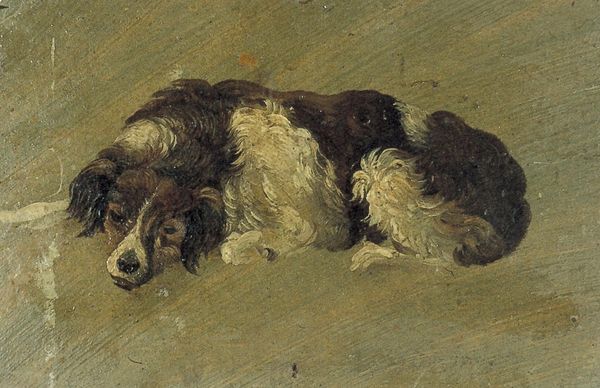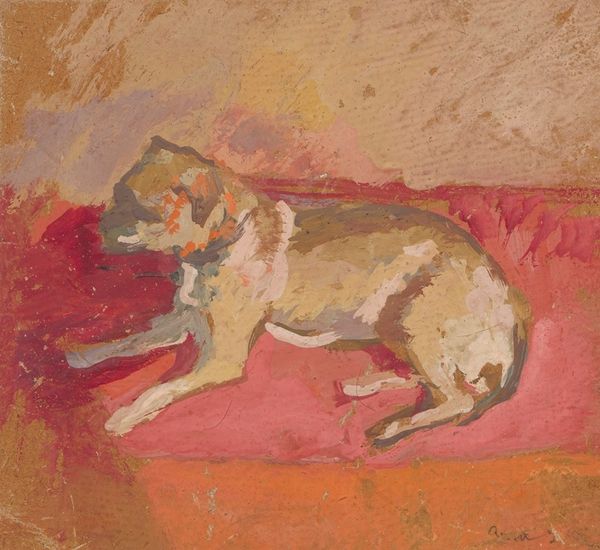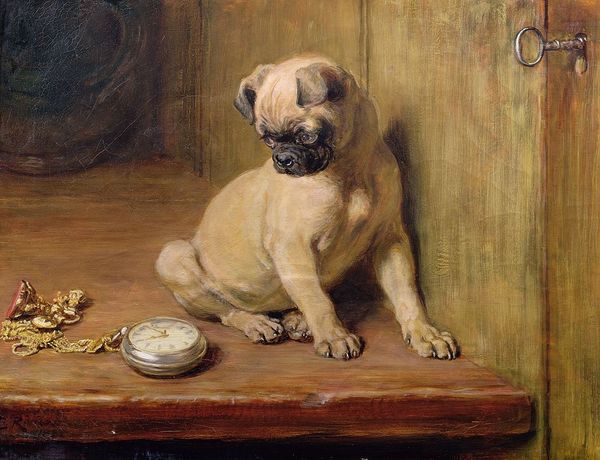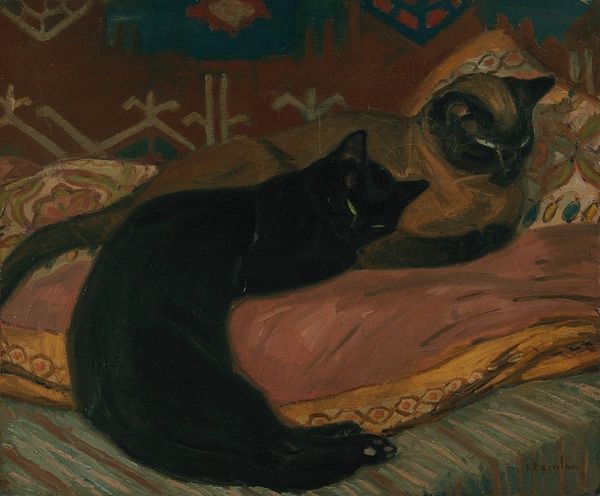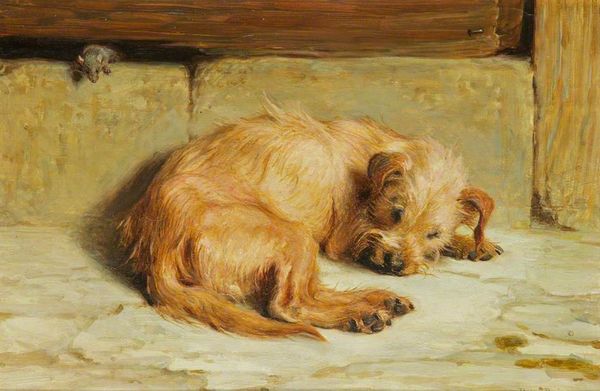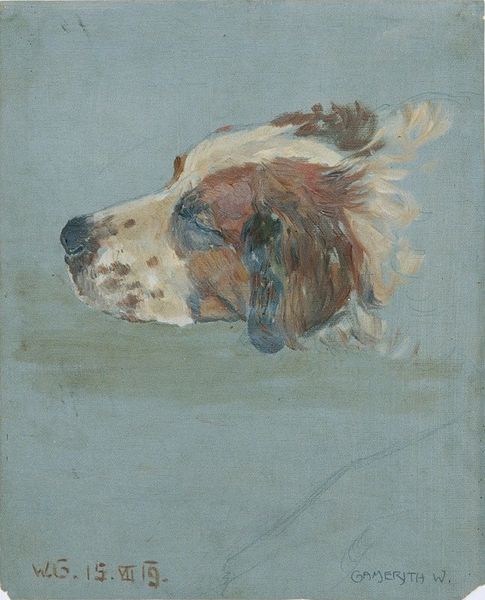
Copyright: Public domain
Curator: Frederick George Cotman created this watercolor painting titled "Tucked Up" in 1904. It's primarily a portrait of a dog nestled in some bedding. Editor: Oh, it’s cozy! There's a sense of gentle domesticity that is immediately appealing. But also something melancholic in the dog's eyes. Curator: Absolutely, the image evokes sentimental feelings, like a visual representation of "creature comforts". The tucked-up dog serves as an accessible symbol for care and nurturing. Editor: Given its date, I can't help but read it in light of the massive shifts in social structures happening at that time. This kind of sentimental portrayal served to idealize domestic life, maybe even as a buffer against rapid change. It certainly makes me wonder who within Cotman's circle may have been comforted or represented by the pet. Curator: That’s insightful. The composition is pretty standard, the subject matter common and timeless. There is something essentially relatable here - animals have always offered humans companionship and acceptance. This feels particularly true for the upper and middle classes, especially at a moment when increased consumerism made keeping animals an indicator of wealth. Editor: Also note the plant in the background! Even the botanical arrangement emphasizes the cultivated interior. This is about crafting not just a living space but also a vision of societal harmony reflected in that small domestic scene. Curator: That harmony also finds form through his masterful rendering of light. The warm hues highlighting the dog against the blue fabrics creates an emotional intimacy. These familiar forms and objects remind me that animals have long been symbolically equated to love and devotion. In ancient mythology, dogs serve as spiritual protectors... Cotman offers a more secular variation of these notions here. Editor: I agree; there's no specific narrative element, making the reading broad enough to evoke feelings about any lost and lonely figure. But the dog’s status as property means that the artist also has a moral obligation to raise concerns about animal treatment, reflecting turn of the century sentiments on animal rights. What feels homey to us now was actually once a powerful commentary on turn of the century England's rising consciousness around class status and property. Curator: I hadn't considered that connection to animal rights directly, but you’re right; it resonates within shifting Victorian values that eventually evolved to modern legal standings for animals today. Editor: Exactly! So, we can see "Tucked Up" both as a comforting portrayal of domestic life, and, unexpectedly, a mirror to evolving cultural ethics during its era. Curator: So much for granted is actually complex when examined with a view towards social context! Thanks!
Comments
No comments
Be the first to comment and join the conversation on the ultimate creative platform.

